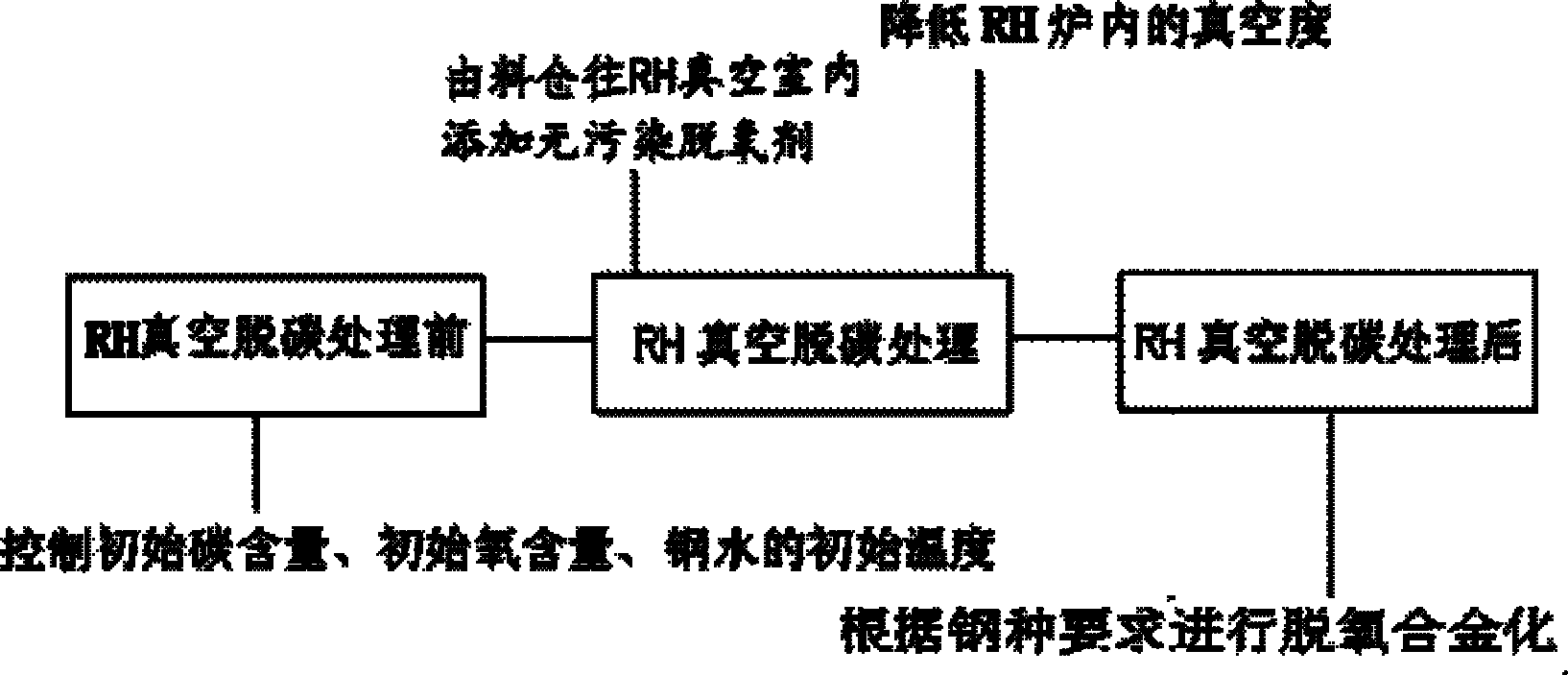Process method for reducing RH vacuum decarbonization end-point oxygen content of ultra-low-carbon steel
A technology for vacuum decarburization and ultra-low carbon steel, which is applied in the field of reducing the oxygen content at the RH decarburization end point of ultra-low carbon steel, can solve the problems of increasing molten steel inclusions, high active oxygen content, and rising costs, and achieves improved molten steel cleanliness. degree, reducing the content of active oxygen and reducing the content of inclusions
- Summary
- Abstract
- Description
- Claims
- Application Information
AI Technical Summary
Problems solved by technology
Method used
Image
Examples
Embodiment Construction
[0018] Below with reference to the accompanying drawings, through the description of the embodiments, the specific embodiments of the present invention, such as the shape, structure, mutual position and connection relationship between the various parts, the role and working principle of the various parts, etc., will be further described. Detailed instructions:
[0019] as attached figure 1 As shown, the present invention is a process for reducing the oxygen content at the end point of RH vacuum decarburization of ultra-low carbon steel, which includes the RH vacuum decarburization treatment step for the primary molten steel, and is characterized in that: the reduction of ultra-low carbon steel The steps of the process method of RH vacuum decarburization endpoint oxygen content are:
[0020] 1) In the early stage of RH vacuum decarburization treatment, add a non-polluting deoxidizer from the silo to the vacuum chamber to remove part of the oxygen in the steel; 2) Further reduc...
PUM
| Property | Measurement | Unit |
|---|---|---|
| particle size | aaaaa | aaaaa |
Abstract
Description
Claims
Application Information
 Login to View More
Login to View More - R&D
- Intellectual Property
- Life Sciences
- Materials
- Tech Scout
- Unparalleled Data Quality
- Higher Quality Content
- 60% Fewer Hallucinations
Browse by: Latest US Patents, China's latest patents, Technical Efficacy Thesaurus, Application Domain, Technology Topic, Popular Technical Reports.
© 2025 PatSnap. All rights reserved.Legal|Privacy policy|Modern Slavery Act Transparency Statement|Sitemap|About US| Contact US: help@patsnap.com


